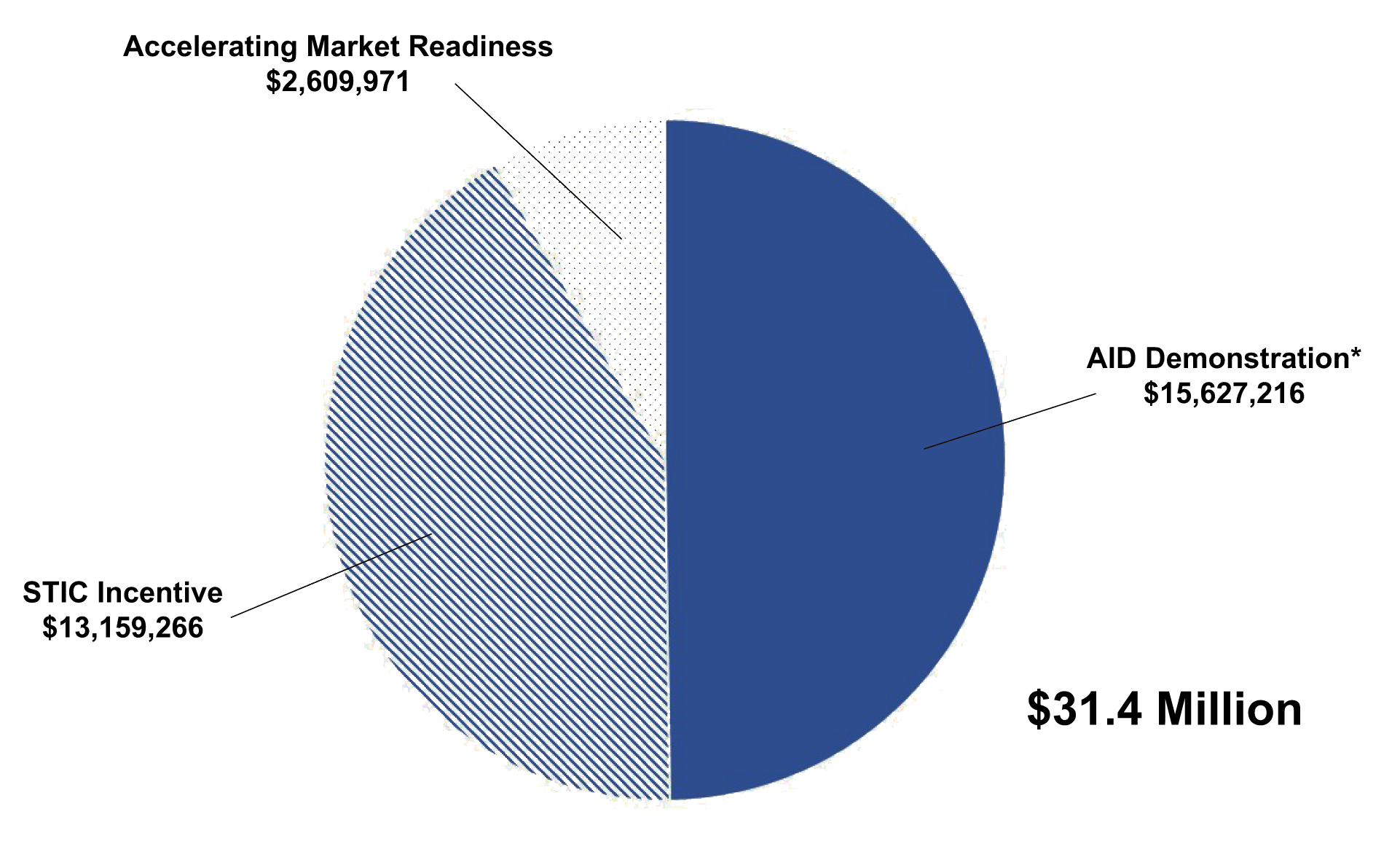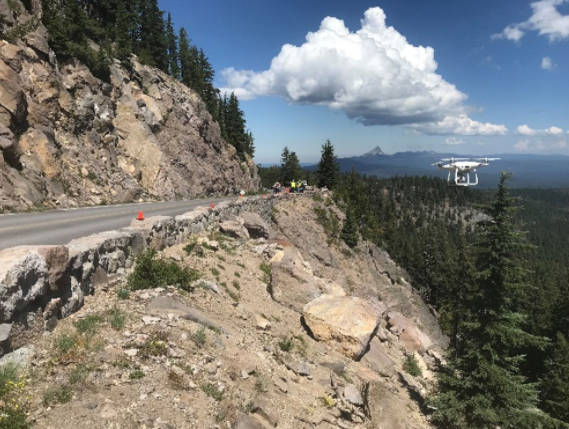FUNDING INNOVATION DEPLOYMENT
(Fiscal Years 2019 through 2021)

FUNDING INNOVATION DEPLOYMENT
(Fiscal Years 2019 through 2021)

Accelerating Innovation provides funding to tribal governments, State departments of transportation, local transportation agencies, and private sector stakeholders to sustain a culture of innovation. From FY19 through FY21, FHWA awarded more than $31 million to 249 projects with the goal to advance, deploy, and standardize innovation.*
The STIC Incentive program offers Federal funding of up to $100,000 per State, per Federal fiscal year to support or offset some of the costs of standardizing innovative practices in a State transportation agency or other public sector STIC stakeholder. Over $13 million was awarded to 51 STICs to institutionalize innovations; almost every STIC has taken advantage of the resources available to move innovation forward.
The AID Demonstration program provides funding as an incentive for eligible entities to accelerate the implementation and adoption of innovation in highway transportation. Over $15.6 million was awarded to 14 recipients to institutionalize innovations.*
The Accelerating Market Readiness (AMR) program provides funding to spur the advancement of emerging transformative innovations that have potential to enhance roadway safety, shorten the project delivery process, and improve the performance of the transportation infrastructure. Funding is available for testing and field evaluations, pilot demonstration projects, and documentation and dissemination of performance results to widen the knowledge base on the innovations. Over $2.6 million was awarded to six recipients for seven topics to advance innovations.
To learn more about these funding opportunities, explore https://www.fhwa.dot.gov/innovation/stic/funding.cfm
*The AID Demonstration program total funding included here does not include up to $10 million that will be awarded under the FY21 Notice of Funding Opportunity.
Through the EDC model, FHWA works with State, local, and tribal transportation agencies, as well as industry stakeholders to identify a new collection of innovations to champion every two years. FHWA is collecting ideas from stakeholders to help determine the next proven, yet underutilized innovations that will be promoted during 2023-2024. Visit the Every Day Counts website for details.

As collaboration is key for innovation deployment, innovators and innovation adopters are finding ways to connect the dots between Unmanned Aerial Systems (UAS) and other EDC Innovations to supply digital information to highway agencies. Here are examples of where UAS technology is being used in the deployment of EDC Innovations.

Using UAS for traffic incident management brings a new level of speed, precision, and efficiency to this critical function. UAS reduces responder time on scene, accelerates crash investigations, creates better situational awareness for responders, and is a cost-effective measuring and mapping alternative.
UAS and other digital data gathering practices provide more information to feed better 3D engineered models and visualization. These digital tools support design optimization and better communication across the various project delivery disciplines and to other stakeholders.
3D modeling and UAS data allow the public to “see” beyond what plan sheets can show, helping them understand alignment options and associated environmental impacts during public outreach, whether in-person or through Virtual Public Involvement.
With the aid of UAS to gather imagery and data for improved mapping and characterization of surface features, geotechnical engineers using the Advanced Geotechnical Methods in Exploration (A-GaME) toolbox are better informed during site characterization.
To stay up to date on EDC collaborations, subscribe to the following newsletters: